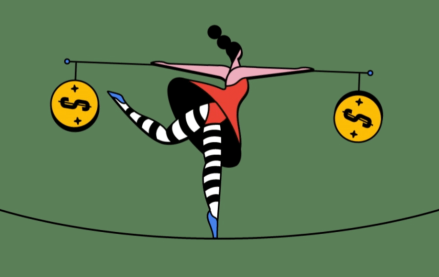Join us Dec. 1-3 in New Orleans for the Digiday Programmatic Marketing Summit

During the aftermath of the dot-com bust, the Interactive Advertising Bureau’s chief Greg Stuart took to referring to the standard banner ad as the “much-maligned banner.” These days, you might as well just always say the “much-maligned mobile banner.”
There’s no doubt that the mobile banner has its problems. The creative is horrible — many are simply unreadable in my experience — the targeting is rudimentary and many brands don’t even have a mobile site to send people to. The “fat finger” issue is thought to account for as much as a third of mobile clicks. Digiday has questioned the long-term viability of the current banner-ad format.
“My beef with most mobile banner ads is, they really suck,” BuzzFeed vp of agency strategy Jonathan Perelman said at the Digiday Mobile conference. He was backed up by many speakers.
The counterargument to all this is that most advertising — desktop, mobile and otherwise — really sucks. Ned Newhouse, who runs mobile at Conde Nast, replied to Perelman’s statement by tweeting that saying mobile banners suck is “like comparing apples to gorillas.”
“We’re beating up the wrong thing. The banner is just a pixel size,” said Sandy Shanman, gm of Appsnack. “Banners are right for some content.”
But the fact remains that the mobile banner, the bulwark of making money in mobile right now, is coming up short. The Food Network, for instance, now sees 30 percent of its traffic via mobile, yet it is “not a major revenue stream for us,” according to Bob Madden, svp and gm of the digital food category at Food Network owner Scripps Network.
Mobile, despite the hype surrounding it, is still rather new. There’s no doubt there are other, newer formats, whether they’re promoted tweets, sponsored stories or rewards-based placement like those offered by Kiip and others. Ad schemes like BuzzFeed’s sponsored content lend themselves well to mobile, too.
All that is not to say the mobile banner business will go away. There will always be a need for a universal, scalable ad. The IAB is getting an early jump on this with its mobile “rising stars” initiative. Sure, iAds were overhyped, no doubt. But they also shined a light on the need to make mobile ads — and all display ads, really — more beautiful and interesting. The full-page, swipeable ads in tablets are great premium placements. And the reason is something the online ad industry talks about only in passing: great creative. Smartphone ads need to go in similar directions. Not every publisher will rely on sponsored content or can rig a rewards-based scheme on a content experience. Instead, there will likely be simply better mobile ad experiences.
More in Media

Forbes launches dynamic AI paywall as it ramps up post-search commercial diversification plans
For the latest Inside the publisher C-Suite series, Digiday spoke to Forbes CEO Sherry Phillips on its AI-era playbook, starting with its AI-powered dynamic paywall to new creator-led commercial opportunities.

Creators embrace Beehiiv’s push beyond newsletters
Creators are embracing Beehiiv’s new website, product and analytics tools to help them grow beyond the competitive newsletter space.

Media Briefing: Publishers turn to paid audience acquisition tactics to tackle traffic losses
Publishers facing declining organic traffic are buying audiences through paid ads and traffic arbitrage, and using AI tools to do it.





